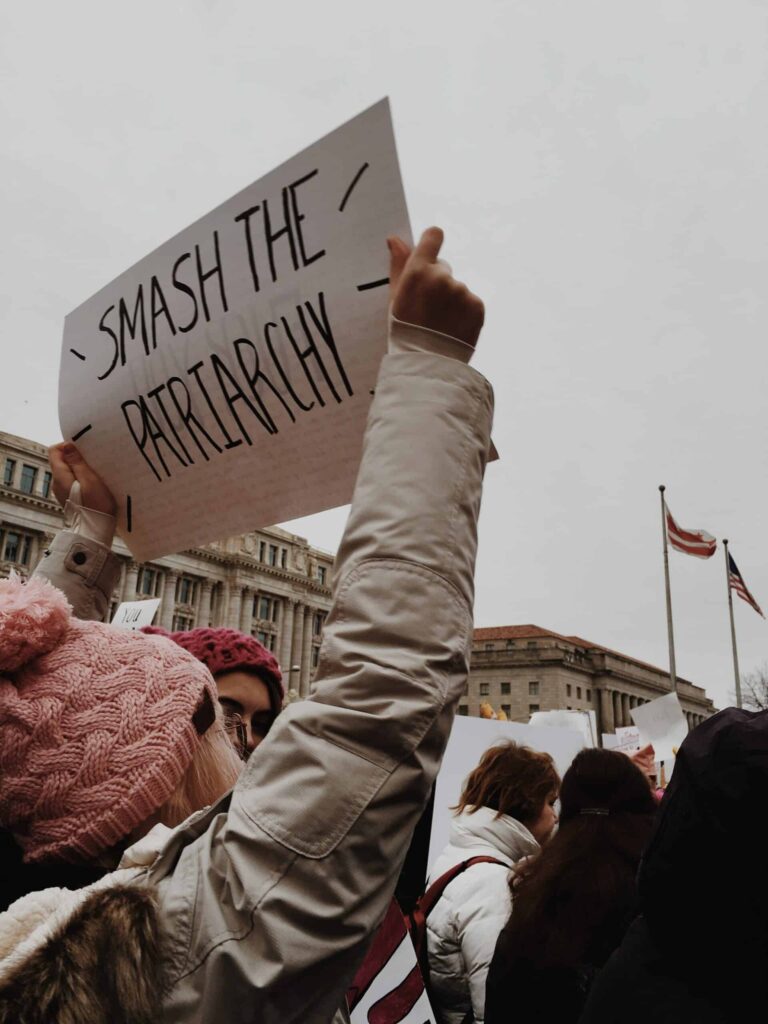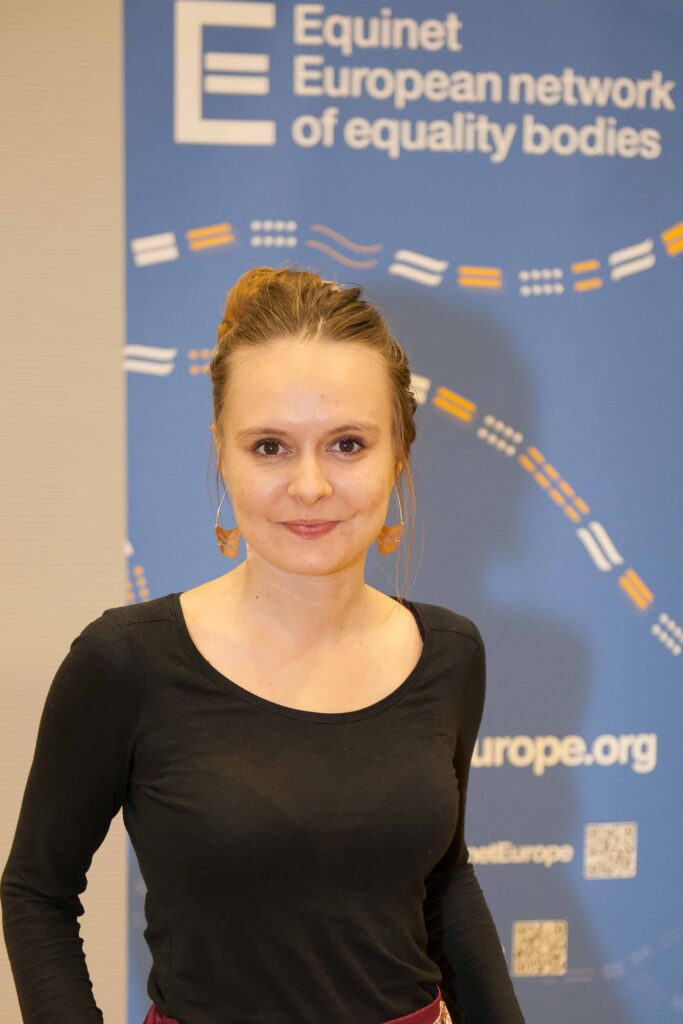15 Top tips for Effective Feminist Advocacy

In the framework of the BBBeyond project, a grassroot feminist and advocacy professional, Moana Genevey, gave us and partners in Czechia an inspiring training session to help us advocate for more equal and diverse representation.
We wanted to share Moana’s top tips to design impactful advocacy strategies.
“You can be a proud feminist, but sometimes and especially in a professional setting, it’s difficult to express how you feel, or to feel that we really have an impact in raising awareness of sexism and bias in the workplace.”
What to say
1. Appeal to reason
Make sure your point is structured around data and facts – it’s unquestionable and rational so it will have impact. It’s even more powerful when you’ve collected the data yourself for your sector/your field (your specific, niche environment).
2. Know your data
Even if you know your stuff, sometimes when speaking or being put on the spot (at a meeting, during a Q&A or discussion, etc.) you can be overwhelmed or be hit by a lack confidence, which risks undermining your point.
3. Make it relatable
To the day-to-day life of people, to the situation/people you are addressing. The more people relate, the more they’ll remember your point.
4. Use impactful data
Even more so in a very conservative environment, where you have to be very strategic. For instance, speaking of the gender pay gap is perhaps not the most impactful to diplomats or International Relations’ officials, who may not be privy to experience such discrimination or aren’t affected.
Examples of impactful facts and data
- There is a UN study linking misogyny and violent extremism, and another one linking domestic violence and terrorism
- The World Bank estimated the global cost of gender equality at $160.2 trillion
- EIGE estimates that 10.5 million jobs would be created if we closed the gender gap in the EU
5. Identify conservative strategies & arguments
Play devil’s advocate to think of ways to counter-act their arguments.
Make it an organisation-wide exercise, and create a file to reflect on arguments and counter-arguments for all your organisation’s topics.
6. Appeal to a specific group’s values
When you build an argument/a set of advocacy message, make sure they appeal to your target group’s values. Data and messages are important, but to be very convincing it’s helpful to dig deep into what your target group values or prioritises most.
7. Appeal to emotions
Populist and extremist movements are very good at doing this. They appeal to fear, hatred, etc. Facts/figures end up not mattering as much as emotions in populist discourses. In our (progressive) messaging, we should also do that – emotions are very powerful! And we can use positive ones (love, hope, tolerance, etc.)
8. Use story-telling
People relate a lot more when they watch or read about an experience, a story. Choose a clear, central message. If possible, make it personal (speaking and saying “I” makes people listen and relate). Observe good story-tellers (e.g. TED talks are really good with story-telling) and replicate!
9. Foster hope
It’s one of the most powerful tool we have in the circle of gender equality. We speak a lot “against” issues, against injustice, etc. When you are against, you don’t inspire, you’re not inventing/proposing something.
Follow these “five shifts” from Thomas Coombes and move from problems to solutions, from threat to opportunity, from “against” to “for”, from victims to heroes, and from fear to hope.
What to do
10. Define your objective
What’s the issue we want to solve? What do we want? Then you break it down into achievable steps; otherwise it’s overwhelming, and it’s discouraging not to see progress. Even more so when the objective is “reaching gender equality”, which feels so far and encompasses so many different things.
11. Get your timing right
Find a window of opportunity. For instance, use a topical issue in the news, bank on an “international day of XYZ”, piggyback on summits and official events, etc.
You can also create your own window of opportunity! Look for instance at the www.noustoutes.org campaign in France. They made so much noise about femicides that the word was created in France, mainstream media took up the issue and the government initiated reflections to legislate.
cf. case study of the French movement “noustoutes.org” counting femicides and making noise about it, to the point that the word was created, big newspapers and mainstream media started to talk about it, and the govt started to reflect on legislation
12. Find your people
Who’s your champion? If it’s a male-dominated environment, find a male ally (and it’s very well-known that men listen to men more).
Who’s your partner? Media, other networks, Ombud/equality body, feminist organisations, NGOs, etc. It’s an essential point to partner up: together, your point is louder and stronger.
13. Adapt to your audience
- If they’re politicians, you need to give key messages and appeal to emotions (the message shouldn’t be too technical)
- If they’re a diplomat, they don’t have much power and will have to refer to their capitals, so no politically-charged discourses, just establish a friendly contact to be invited/stay in touch with them and their network
- If they’re a bureaucrat you can get technical (but be careful, if they are too high-level you may need to be more strategic, because they have a lot of decision-making power)
Map your target groups. If you map everyone, do you also talk to everyone (even people who wouldn’t be sympathetic to our cause, e.g. extreme right)? You can engage, just with different strategies, for instance making yourself visible.
Bonus tips
14. What about men?
Bingo! This is the one question that is always asked. At every conference on a gender-related topic, at every media interview. So make sure you have an answer ready!
You can say that there are many things men can do, and you can check out our toolkit on male ally-ship for inspiration. Tell them there are many toolkits, tips and things that have been written on the topic, all they need to do is google them!
15. Empowered women empower women: so-ro-ri-ty!
Support other women. We’re not taught that because of social norms, there are many ways in which we’re educated to be in competition with one another. Support and lift other women around you (with mentoring, listening, …). It’s a very powerful thing!
It is not about blindly supporting people just because they’re women, it’s about practicing questioning our bias and lifting other women up.

Moana Genevey is a Brussels-based grassroot feminist campaigner. She took an active role in creating and growing the Collecti.e.f 8 maars, who organised Women* Strikes in Belgium in 2019 and 2020. In her day job as Gender Policy Officer at Equinet, she advocates for gender equality at EU level.
She specialises in giving trainings on tackling gender-based violence and harassment in organisations, developping feminist advocacy campaigns and understanding how to achieve gender equality at the European level. You can contact her at moana.genevey@gmail.com